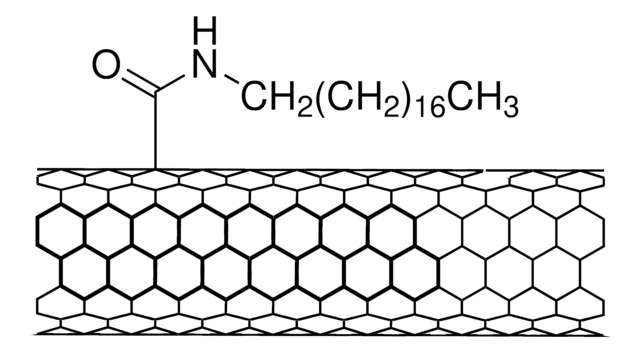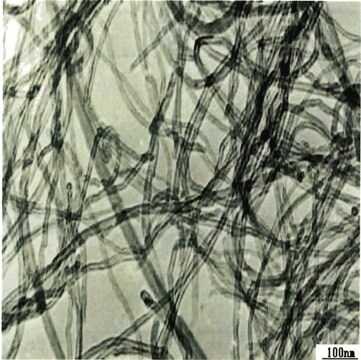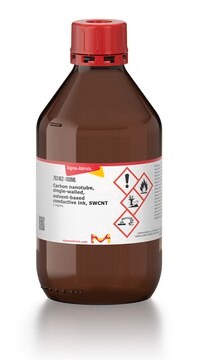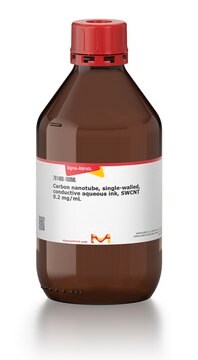652490
Carbon nanotube, single-walled
carboxylic acid functionalized, >90% carbon basis,D × L 4-5 nm × 0.5-1.5 μm , bundle dimensions
Sinónimos:
SWNT, carboxylic acid functionalized
About This Item
Productos recomendados
Nombre del producto
Carbon nanotube, single-walled, carboxylic acid functionalized, >90% carbon basis, D × L 4-5 nm × 0.5-1.5 μm , bundle dimensions, avg. no. of layers, 1
assay
>90% carbon basis
form
powder
feature
avg. no. of layers 1
extent of labeling
1.0-3.0 atom% carboxylic acid
D × L
4-5 nm × 0.5-1.5 μm , bundle dimensions
impurities
5-8% metals
solubility
H2O: dispersible 0.1 mg/mL
DMF: dispersible 1.0 mg/mL
functional group
carboxylic acid
Categorías relacionadas
General description
Application
Packaging
Physical properties
Preparation Note
Analysis Note
signalword
Warning
hcodes
Hazard Classifications
Eye Irrit. 2 - STOT SE 3
target_organs
Respiratory system
Storage Class
11 - Combustible Solids
wgk_germany
WGK 3
flash_point_f
Not applicable
flash_point_c
Not applicable
ppe
dust mask type N95 (US), Eyeshields, Gloves
Elija entre una de las versiones más recientes:
¿Ya tiene este producto?
Encuentre la documentación para los productos que ha comprado recientemente en la Biblioteca de documentos.
Los clientes también vieron
Artículos
Carbon nanotubes are materials that possess remarkable properties and offer extraordinary possibilities.
Dr. Xiang’s and Maruyama’s review presents the most recent research activities on 1D vdWHs, including the candidate materials, the synthetic techniques, and characterization methods. The optoelectronic applications are discussed in detail for different constructions of the 1D vdWHs-based devices (FETs, sensors, LEDs, photovoltaic devices, and light detection). Some challenges and perspectives for future development and applications of 1D vdWHs are also proposed to conclude the review.
Carbon nanotubes (CNTs) have received much attention since their discovery in 1991 by Sumio lijima1 due to their excellent mechanical, electrical, and optical properties.
A nanocomposite is typically defined as a mixture between a host material (e.g., polymer matrix) and nanofillers with at least one dimension of less than 100 nm.
Nuestro equipo de científicos tiene experiencia en todas las áreas de investigación: Ciencias de la vida, Ciencia de los materiales, Síntesis química, Cromatografía, Analítica y muchas otras.
Póngase en contacto con el Servicio técnico









